DVD & CD PDH courses
The topics of the live seminar are different from the DVD courses.
Now the PE engineers can obtain their PDH courses and renew their PE license in 2 easy steps.
- Purchase the CD/DVD for $37.00.
- You can take the quiz anytime after your purchase. You can take the quiz as many times as you want, until passed. After passing the quiz, pay for the remaining balance of the course and print your certificate.

To place an order by phone:
CD Courses:
Your computer must have at least a CD drive for the following CDs:
Click on the hyperlink of each course bellow for more information.
15 PDH Forensic Engineering, Part # 1; DVD including 1 PDH in Ethics
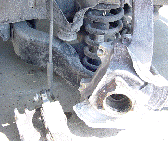
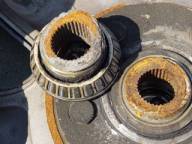
Credit: 15 PDH
Course Fee: $279.00
Course Author: Franco F. Davati, P.E.
Course Summary:
The course discusses the principals of forensic engineering. Your computer must have a DVD drive, however you do not watch this like a DVD movie or from your DVD player. The course is a combination of PDF files, color slides, animation and video clips. The course is designed more toward vehicle accident reconstruction and product liability.
Learning objectives:
The student will learn about Product liability, failure analysis, accident reconstruction and investigation, industrial accidents, vehicle accidents, tractor-trailer accidents, train accidents, boat accidents, vehicle fire accidents, insurance fraud, testifying in court as an engineer, video animation and court room presentation.
View Course Topics
15 PDH CD (1 PDH Ethics), Forensic Engineering, Part # 2; Residential and Commercial Building Damage Investigation CD
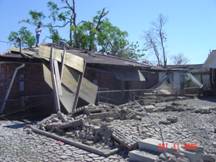
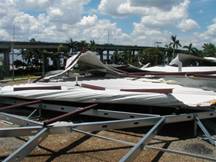
(15 PDH complete package CD for PE professional engineers including 1 PDH in Ethics.)
Credit: 15 PDH
Course Fee: $299.00
Course Summary:
The course is a power point presentation of over 950 color slides ( no, you do not have to have a power point presentation program). It helps an engineer to develop an eye to detect home structural damage. The course covers a wide range from hurricanes and hailstorm to foundation and roof damage. Click on the course topics and quiz hyperlink below for more information.
Learning objectives:
A "must CD" for any engineer who is a home owner. Especially if his home is in a hurricane zone or is susceptible to foundation or water damage. Things an engineer or any home owner needs to do before the hurricane season. Covering home inspection damage from Hurricanes Katrina, Charley, Isabel and Frances. Foundation damage, termite damage found in a newly purchased home, EIFS damage, roof damage, alleged hail storm damage and many more interesting cases. Over 950 color slides power point presentation of homes and commercial damage inspections ..!!?
View Course Topics
Forensic Engineering, Part #2 and Part #1 are two independent courses from each other. You do not have to take Part #1 to understand Part #2.
16 PDH Package; How to protect your house from flooding + 1 PDH Ethics, CD
15 PDH UBC Code related material and regulations + 1 PDH Ethics
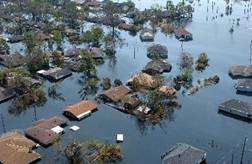
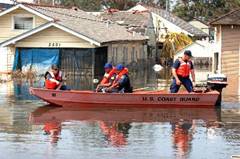
Credit: 16 PDH
Course Fee: $259.00
Course Summary:
This course is specifically for engineers/homeowners who want to know how to protect their house from flooding. As a home owner you need clear information about the options available to you and straight forward guidance that will help you make the right decision.
Learning objectives:
The course discuss how to make changes to your house in order to flood proof your house either temporary or permanently. Different methods of permanently flood proofing or elevating your house and the approximate cost. Different examples of elevating or flood proofing a house based on the type of the foundation it has.
View Course Topics
15 PDH (1 PDH Ethics), How to Start a Part Time/Full Time Consulting Engineering Company on a Shoestring DVD
This course is not approved for the NY engineers due to its title, if you are interested, you may want to take Forensic Engineering #1 instead.
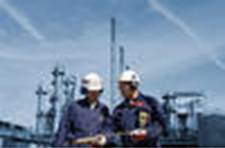
This DVD is most of the material in Forensic Engineering #1 + the business section in how to start a part time/full time consulting engineering company. The business section would work for any type of consulting engineering Company, it does not have to be Forensic Engineering.
Credit: 15 PDH
Course Fee: $259.00
Course Summary:
The course discusses the principals of starting a part time/full time consulting engineering business. The business section is a 40 page PDH files with samples of how to create a brochure, set up your business and most important of all how to make cold calls and market your business.
The technical part is Forensic engineering in vehicle accident reconstruction and some product liability cases. Your computer must have a DVD drive, however you do not watch this like a DVD movie or from your DVD player. The course is a combination of PDF files, color slides, animation and video clips.
Learning objectives:
Many engineers "wish" to have their own business, but do not know what to do!? As many engineers work in large corporations or work in a field that does not lend itself to small business.
The main purpose of this course is to teach any engineer with the basic 2 years of college in Physics, to start a part time/ full time business in Forensic Engineering.
The student will learn about vehicle accident reconstruction and investigation, product liability, failure analysis, industrial accidents, tractor-trailer accidents, train accidents, boat accidents, vehicle fire accidents, insurance fraud, testifying in court as an engineer, video animation and court room presentation.
View Course Topics
5 PDH, Forensic Engineering, Part #3 CD: Vehicle accident engineering reconstruction, Damage consistency CD

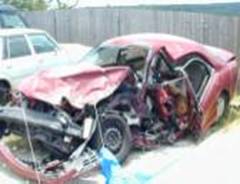
Credit: 5 PDH
Course Fee: $99.00
Course Summary:
The course teaches the basics and principals of vehicle accident reconstruction in Forensic Engineering. The power point presentation has 255 slides covering from basic insurance fraud damage investigation case and fake paint transfer, to investigating a fatality accident. There is also 2 samples of product defects resulting in injury and death. As a bonus we have also included material for engineers who are interested in testifying in court as an engineer. Your computer must have a CD drive.
Learning objectives:
MThe student will learn about the basics of accident reconstruction and investigation, insurance fraud, testifying in court as an engineer, video animation and court room presentation.
View Course Topics
3 PDH, Forensic Engineering, Part #4; Vehicle fire engineering investigation ($16/PDH) CD
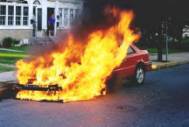
Credit: 3 PDH
Course Fee: $58.00
Course Author: Franco F. Davati, P.E.
Course Summary:
The course teaches the basics and fundamentals of vehicle fire investigation in Forensic Engineering in 124 power point present ion slides. The course covers investigation cause & origin of fire accident in the vehicle, insurance fraud and arson and a product liability case. As a bonus, we have also included materials for engineers who would like to testify as an engineer in court.
Learning objectives:
The engineer learns the following:
- The general fundamental of vehicle fire investigation and going to the scene of the accident.
- Sample photo slides of different vehicle fire accidents.
- Sample photo slides of finding cause & origin of the fire after the car is burned.
- Sample photo slides of detecting insurance fraud and arson in vehicle fires using simple laws of propulsion, heat transfer and heat radiation.
- Case study; product liability, a Ford F-150 cruise control fire accident.
- + Plus free course related reading material regarding the Daubert-Robinson Challenge and how to testify in court as an engineer.
View Course Topics
5 PDH Package; Building Performance and Damage Investigation after 4 Hurricanes+1 PDH Ethics, CD
4 PDH UBC Code building performance + 1 PDH Ethics
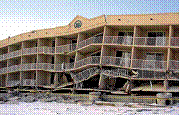
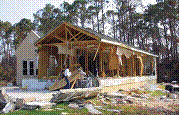
Credit: 5 PDH
Course Fee: $99.00
Course Summary:
This course discuss the overall reaction of the buildings in Florida and Alabama when they were struck with hurricanes Charley CAT 4, Frances CAT 2, Jean CAT 3, and Ivan CAT 3 + flooding.
Learning objectives:
The course explains what was the most consistent failure in the buildings. Discussing Florida FBC, SBC, IBC and IRC and their updates.
Overall observation of damage to the manufactured homes, concrete/masonry homes and steel frame structures. How to minimize damage to older buildings both residential and commercial buildings. This course is not just for Florida engineers. The conclusions are intended to assist the communities, businesses and individuals in the reconstruction process and to help reduce future wind and water damage, and promoting the economic well being of the citizens.
The methodology is universal and can apply to any building in any part of the world subjected to hurricane wind forces.
View Course Topics
10 PDH Package; Building Performance and Damage Investigation after Hurricane Katrina +1 PDH Ethics, CD
9 PDH UBC Code related building performance + 1 PDH Ethics
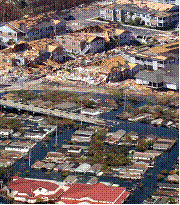
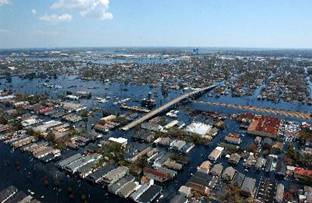
Credit: 10 PDH
Course Fee: $199.00
Course Summary:
Hurricane Katrina was one of the strongest storms to impact the coasts of the United States during the past 100 years.
Learning objectives:
This course discuss the damage caused by Hurricane Katrina in Louisiana and Mississippi. Why some of the buildings and structures survived and some didn't. Was most of the damage caused by the hurricane wind or the flood waters and why? How did different structures reacted differently to the flood. With conclusions and recommendations that will assist local communities, businesses and individuals in reconstructing and will help reduce the impact of future hurricanes.
View Course Topics
31 PDH Package; Building Performance and Damage Investigation after Hurricane Charley + 1 PDH Ethics,), CD
30 PDH UBC Code related and regulations + 1 PDH Ethics
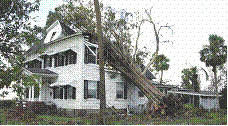
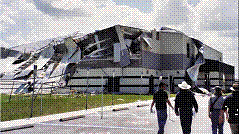
The most comprehensive hurricane building performance and damage investigation report ever. A "must CD" for every engineer/homeowner in the hurricane zone.
Credit: 31 PDH
Course Fee: $329.00
Course Summary:
This is a very comprehensive course and technical report regarding Hurricane Charley and its damage on different types of structures and buildings.
Learning objectives:
Discussion of the same type of building structure reacting differently to the hurricane forces, by taking precautionary steps and adding new structural futures to the building. How building structures reacted differently based on their design and their building code. Discussing and comparison of how the FBC 2001 Code has improved the overall building structural integrity and strength in all different types of buildings and residential structures + over 200 color slides +...many more interesting topics. The conclusion and recommendation of this report are intended to provide information and technical guidance that can be used to reduce future hurricanes damage.
View Course Topics
Hurricane Ike,
The only house that withstood the Hurricane
that was built based on the Code


33 PDH Package; How to design & construct a house to withstand 150 mph wind + 1 PDH Ethics, CD
32 PDH UBC Code related material and regulations + 1 PDH Ethics
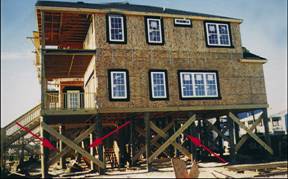
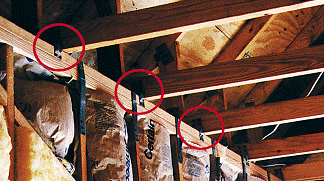
Credit: 33 PDH
Course Fee: $359.00
Course Summary:
Recent hurricanes, storms and tornados have caused enough damage. Although no one can predict future strength of hurricanes and tornadoes, this course shows how to design & construct a house to withstand 150 mph wind.
Learning objectives:
This course provides the engineers and other design professionals with guidance on how to determine by calculation or graphical interpretation, the magnitude of the loads placed on a building by a particular natural hazard event or a combination of events. The calculation methods presented in this chapter are intended to serve as the basis of a methodology for applying the calculated loads to the building during the design process.
The calculations are for wind load, tornado loads, snow load, seismic loads and load combinations. The course has plenty of + Colorful design schematics + color pictures + Free window base load calculation program for building structures.
View Course Topics
21 PDH Package; How to pick a residential lot or building site in coastal areas + 1 PDH Ethics, CD
20 PDH UBC Code related material and regulations + 1 PDH Ethics
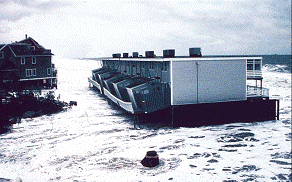
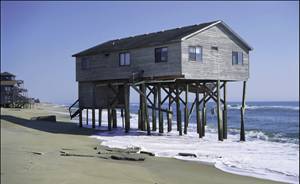
Credit: 21 PDH
Course Fee: $284.00
Course Summary:
This course provides guidance for the design and construction of coastal residential buildings that will be more resistant to the damaging effects of natural hazards. The focus is on new residential buildings—principally detached single-family, attached single-family (townhouses), and low-rise(three-story or less) multi-family buildings. Discussions, examples, and example problems are provided for buildings located in or near coastal flood hazard areas, in a variety of coastal environments and subject to high winds, flooding, seismic activity, erosion, and other hazards.
Learning objectives:
This course will be of assistance to all persons involved in the design and construction of one- to three-story residential buildings in coastal areas of the United States and its territories. Contractors, designers, architects, engineers, and building officials can apply the information presented in this manual as they strive to site and construct disaster-resistant housing.
View Course Topics
41 PDH Package; Everything you want to know about Foundation on Expansive Soils + 1 PDH Ethics, CD
40 PDH UBC Code related material + 1 PDH Ethics
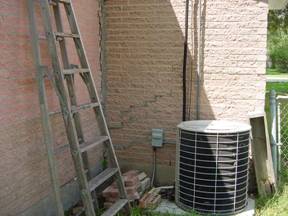
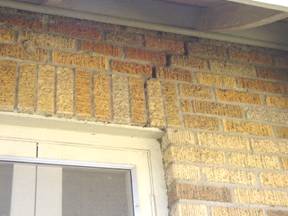
Credit: 41 PDH
Course Fee: $399.00
Course Summary:
This course presents guidance and information for the geotechnical investigation necessary for the selection and design of foundations for heavy and light buildings constructed in expansive clay soil areas.
Learning objectives:
The information in this course is generally applicable to many types of structures such as residences, warehouses, and multistory buildings. Emphasis is given to the maintenance of an environment that encourages constant moisture conditions in the foundation soils during and following construction.
Special attention is given to specific requirements of the structure such as limitations on allowable differential movement.
View Course Topics
18 PDH Package; How design and construct an earthquake resistant house + 1 PDH Ethics, CD
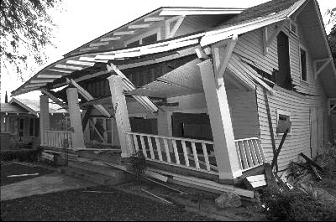
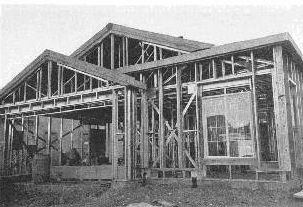
Credit: 18 PDH
Course Fee: $279.00
Course Summary:
The primary purpose of this Home Builders Guide to Seismic Resistant Construction, hereafter referred to as the "Guide", is to encourage homeowners and builders of one and two family residences to employ construction practices intended to provide resistance to damage from earthquakes.
Learning objectives:
This Guide can be used as a convenient resource for gaining an understanding of the basic principles of seismic resistant construction. The Guide presents a discussion of how earthquake forces impact conventional residential construction. A discussion is included on how basic structural components can be assembled to achieve earthquake resistance and how essential features such as foundations, walls, floors and roofs interact to resist earthquakes.
View Course Topics
16 PDH Package; How to visually screen buildings for potential seismic hazard + 1 PDH Ethics, CD
15 PDH UBC Code related material and regulations + 1 PDH Ethics
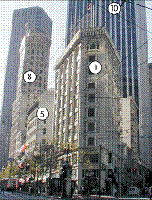
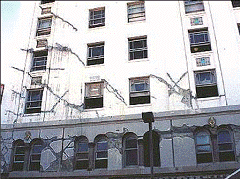
Credit: 16 PDH
Course Fee: $257.00
Course Summary:
Rapid visual screening of buildings for potential seismic hazards, as described in this course, originated in 1988 and is written for a broad audience ranging from engineers and building officials to appropriately trained professionals.
Learning objectives:
This course provides a “sidewalk survey” approach that enables users to classify surveyed buildings into two categories: those acceptable as to risk to life safety or those that may be seismically hazardous and should be evaluated in more detail by a design professional experienced in seismic design.
View Course Topics
31 PDH Package; How the energy-efficient buildings in Los Alamos Labs are built + 1 PDH Ethics, CD
30 PDH UBC Code related material and regulations + 1 PDH Ethics
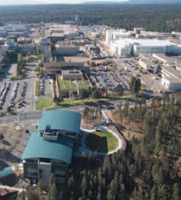
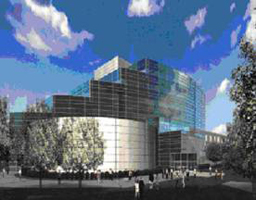
Credit: 31 PDH
Course Fee: $317.00
Course Summary:
Los Alamos National Labs (LANL) needs significant recruitment in response to increasing retirements. This has presented LANL with a unique opportunity to form and foster an exceptional work environment that supports its mission and attracts and retains the people most qualified to fulfill that mission. In order to do so LANL decided to create and “exceptional work environment”.
Learning objectives:
What is an “exceptional work environment?” This work environment includes and must consider the:
- Individual laboratory and/or office space.
- Tools and equipment used by an individual and the ease of the human/machine interface.
- Surrounding structure or building and its created climate.
- Interstitial or common space that facilitates population massing and encourages cross communication.
- Transportation (pedestrian and vehicular) options that provide ease of access.
- Natural environment in which the work environment is established.
An exceptional work environment supports and encourages interconnectedness among these elements contributing to efficiencies and productivity. The process of Sustainable Development will be a key element to establishing LANL’s exceptional work environment.
The sustainable development concept encompasses the materials to build and maintain a building, the energy and water needed to operate the building, and the ability to provide a healthy and productive environment for occupants of the building. Often, sustainable development has been referred to as climate-sensitive design, whole-building design, or high-performance buildings. Much of the original work in this field was done under the auspices of passive solar design – for which LANL was a national and international leader.
View Course Topics
31 PDH Package; How to build residential construction in the gulf coast area + 1 PDH Ethics, CD
30 PDH UBC Code related material and regulations + 1 PDH Ethics
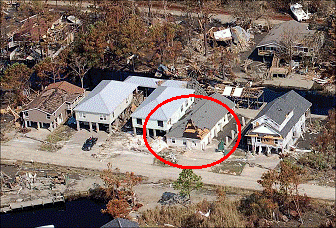
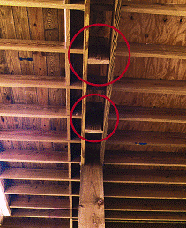
Credit: 31 PDH
Course Fee: $319.00
Course Summary:
The intent of the course is to provide Gulf Coast homebuilders, contractors, and local engi¬neering professionals with a series of recommended foundation designs that will help create safer and stronger buildings along the Gulf Coast. The use of these designs is intended to cover many of the home styles anticipated for the construction effort.
The foundations may differ somewhat from traditional construction techniques; however, they represent what are considered to be some of the better approaches to constructing strong and safe foundations in the hazardous areas along the Gulf Coast. The objectives used to guide the development of this manual are:
- To provide residential foundation designs that will require minimal engineering oversight
- To provide foundation designs that are flexible enough to accommodate many of the homes identified in A Pattern Book for Gulf Coast Neighborhoods prepared for the Mississippi Governor’s Rebuilding Commission on Recovery, Rebuilding and Renewal (see Appendix B)
- To utilize model layouts so that many homes can be constructed without significant addi¬tional engineering efforts
Learning objectives:
The focus of this document is on the foundation of residential buildings. The assumption is that those who are designing and building new homes will be responsible for ensuring that the building itself is designed according to the latest building code (International Building Code [IBC], International Residential Code [IRC], and FEMA guidance) and any local requirements. The user of this manual is directed to other publications that also address disaster-resistant con¬struction (see Appendix G).How the energy-efficient buildings
Although the foundation designs are geared to the coastal environment subject to storm surge, waves, floating debris, and high winds, several are suitable for supporting homes on sites pro¬tected by levees and floodwalls. For protected sites, wave loads may be less than those in an ex¬posed coastal environment and, therefore, the designs presented in this manual may be conser¬vative for such areas.
View Course Topics
37 PDH Package; How to evaluate earth quaked damaged concrete and masonry wall buildings + 1 PDH Ethics
36 PDH UBC Code related material and regulations + 1 PDH Ethics
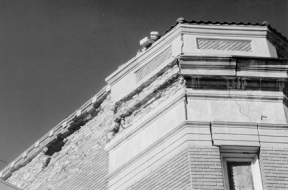
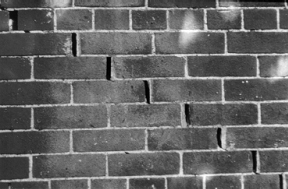
Credit: 37 PDH
Course Fee: $368.00
Course Summary:
The purpose of this document is to provide practical criteria and guidance for evaluating earthquake damage to buildings with primary lateral-force-resisting systems consisting of concrete or masonry walls or infilled frames.
This course is more on the analytical side, compared to our "How to visually screen buildings for seismic hazard"
Learning objectives:
The procedures in this manual are intended to characterize the observed damage caused by the earthquake in terms of the loss in building performance capability. This information may be used to facilitate the settlement of insurance claims, the development of strategies for repair, or other purposes. The intended users of this document are primarily practicing engineers with experience in concrete and masonry design in seismic regions. Information in this document also may be useful to building owners, building officials insurance adjusters, and government agencies; however these users should consult with a qualified engineer for interpretation or specific application of the document.
View Course Topics
21 PDH Package; Recommendations and Technical Guidelines for Midwest Tornadoes + 1 PDH Ethics, CD
20 PDH UBC Code related material and regulations + 1 PDH Ethics
Credit: 21 PDH
Course Fee: $299.00
Course Summary:
On the evening of May 3, 1999, an outbreak of tornadoes tore through parts of Oklahoma and Kansas, in areas that are considered part of "Tornado Alley", leveling entire neighborhoods and killing 49 people. The storms that spawned the tornadoes moved slowly, contributing to the development and redevelopment of individual tornadoes over an extended period of time.
On May 10, the Federal Emergency Management Agency's (FEMA’s) Mitigation Directorate deployed a Building Performance Assessment Team (BPAT) to Oklahoma and Kansas to assess damage caused by the tornadoes. The team was composed of national experts including FEMA Headquarters and Regional Office engineers and staff; a meteorologist; architects; planners; wind engineers; structural engineers; and forensic engineers. The mission of the BPAT was to assess the performance of buildings affected by the tornadoes, investigate losses, and describe the lessons learned. This report presents the BPAT’s observations, conclusions, and recommendations, which are intended to help communities, businesses, and individuals reduce future injuries and the loss of life and property resulting from tornadoes and other high-wind events.
Learning objectives:
The observations, conclusions, and recommendations in this course are grouped to address issues concerning (1) residential property protection, (2) non-residential property protection, and (3) personal protection and sheltering. The BPAT’s findings are correlated with the Fujita damage scale, which ranks tornadoes according to the damage they cause, and general tornado intensity (Table 1-1).
During the field investigation, the BPAT investigated buildings to identify successes and failures that occurred during the tornadoes. Building failures were identified as being directly struck by the vortex or core of the tornado, affected by winds outside the vortex of the tornado, or out on the extreme edge or periphery of the tornado path. Considerable damage to all types of structures throughout Oklahoma and Kansas was observed. Failures occurred when extreme winds produced forces on the buildings that they were not designed to withstand. Failures also occurred when wind-borne debris penetrated the building envelope, allowing wind inside the building that again produced forces on the buildings that they were not designed to withstand. Additional failures observed were attributed to improper construction techniques and poor selection of construction materials. It was a goal of the BPAT to determine if any of the damage observed to both residential and non-residential buildings was preventable.
View Course Topics
DVD Courses:
Your computer must have a DVD drive: The DVD courses are a combination of PDF files, power point presentation and videos and are viewed like a CD. We had to put it on the DVD format due to it's large volume. You do not have to have powerpoint presentation.
You can not watch this course like a DVD movie from your TV.
You can look or take the quiz questions to see what type of questions you need to be able to answer. You can take the quiz and grade yourself as many times as you want. The quiz results are not your certificate. You can take your quiz instantly.
It is mandatory for the LA, FL, NC, and NY engineers to take the quiz and keep a copy of their passing score for their records, otherwise their credits will not be reported to their boards.
If you need a copy of your test or score, simply print the screen of your quiz or your score. You can take the quiz as many times as you want. Your printed results are not your certificate. You will receive your certificate from us or after your purchase with a credit card.
We offer a 100% full money back guarantee if your Board of Professional Engineers does not accept our course fully or partially for any reason.
Once you have purchased and received your DVD or CD there is no refund after the purchase.
You can not have multiple certificates for your associates and other engineers in your office or friends by purchasing one CD/DVD. It's one certificate per CD/DVD.
To place an order by phone:
Tel: 713-787-6810
You can register for our live seminars or purchase our DVDs and CDs using a credit card or by check.
ou will receive your certificate for PDH hours of continuing engineering education at the end of the live seminar or with your seminar at home DVD or CD in the mail when you purchase, without a delay. The date of your certificate is the date of your purchase.
You will receive your DVD or CD and the certificate in the mail in less than a week.
We offer a 100% full money back guarantee if your Board of Professional Engineers does not accept our course fully or partially for any reason.
